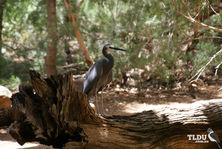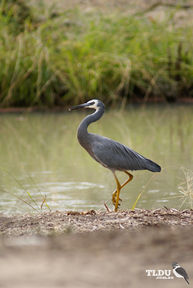
Shoppers Feedback:
Jan 17, 2017
Hello Ros,
I have now paid the invoice, but I would like to write to you just to say a big THANK YOU for getting me the Penguin!
The ChatterMate Penguin became a nice memory for me when I was in New Zealand, and I am so greatful to you for arranging so that I could have it! :-)
Thank you so much!!!!!!!!!!!
Regards,
Malin
Hi Ros,
Many thanks for your very kind email. I really appreciate your prompt reply!
I appreciate your advice regarding the decorations and customs. These are a gift for my daughter’s exchange student family so when she returns home on the weekend I will show her and see if she loves them as much as I do!
Thanks so very much again - I am truly grateful for your kind assistance.
Kind Regards
Bernadette
Ros,
Thanks again for the great customer service. It's a refreshing change!
Best regards,
Trevor
Hey Roz,
Thank you for your emails. Just loved my first order. The cute little Aussie bush critters are going to be used for an office Christmas decoration. My colleagues also liked them and talked about making an order to your site. I'll send you a photo when completed.
I'll be ordering more to send to my daughter's host family in America.
Fabulous service from you.
Kind regards,
Michelle
Thankyou. Order arrived today. One very happy grandson with his new beastly binoculars.
Regards,
Irene
- Home
- Wild Wonders
- Shop
- Aromas of Australia
- Australian Made
- Books
- Book Marks
- Christmas Decoration Sale
- Christmas Decorations
- Clocks
- Drink Holders
- Garden & Outdoor
- Gift Wrapping & Cards
- Home & Giftware
- Jewellery
- Keyrings
- New Products
- Pencils & Pen Holders
- Photo Frames
- Plush Toys
- Plush with Sound
- Sheepskin Rugs
- Stationery
- Stone Carvings
- Toys & Games
- Travel Goods
- Wedding
- Wild Figurines
- Wildlife Safety Products
- Wind Chimes
- Wine Charms
- View All Products
- Wildlife
- Australiana
- Explore
- Contact Us

Quick Facts
| Length: | - |
| Height: | 65 cm |
| Weight: | - |
| Colour: | Light blue-grey in colour with white face |
| Habitat: | Anywhere there is water, from tidal mudflats and coastal reefs to most grasslands and gardens |
| Food: | Variety of prey including fish, insects and amphibians |
| Predators: | - |
| Status: | Secure in all states and territories in Australia |
The White-faced Heron is mostly light blue-grey in colour, with a characteristic white face. In flight, the dark flight feathers of the wing contrast with the paler grey plumage, making this bird easily identifiable when viewed from below. It has a long, slim neck and a pointed grey-black bill. The legs are long and dull yellow in colour. Sexes are similar. When breeding, the birds have long feathers (nuptial plumes) on the head, neck and back. The White-faced Heron has a slow bouncing flight. Young White-faced Herons are similar in appearance to the non-breeding adults (no nuptial plumes), but are duller, with little or no white on the face. They often have a reddish colour on the underparts.
White-faced Herons are the most commonly seen herons in Australia. They are found throughout the mainland and Tasmania, and most coastal islands.
White-faced Herons can be found anywhere where there is water, from tidal mudflats and coastal reefs to moist grasslands and gardens.
The White-faced Heron feeds on a wide variety of prey, including fish, insects and amphibians. Food is obtained in a variety of ways, such as walking and disturbing prey, searching among damp crevices or simply standing in the water and watching for movement.
White-faced Herons may breed outside the breeding season in response to rainfall. Both sexes share the building of the nest, incubation of the eggs and care of the young. The nest is an untidy structure of sticks, placed in a tree. Normally only one brood of young is raised in a year.
Last Updated: Thursday 9th January, 2014
BirdLife Australia - www.birdlife.org.au
BUSH e-TELEGRAPH
Signup for our monthly newsletter the "e-Telegraph"
Quick Links
Home | The Beginning | About The Land Down Under | Wild Wonders | Advertise on Wild Wonders | Christmas Decoration Sale | Christmas Tree Decorations | Drink Holders | Plush with Sound | Stone Carvings | Wildlife Wine Charms | Freebies | Australian Wildlife | Help Our Wildlife | Australiana | Photo of the Month | Explore The Land Down Under | Contact Us | Legal Notices


